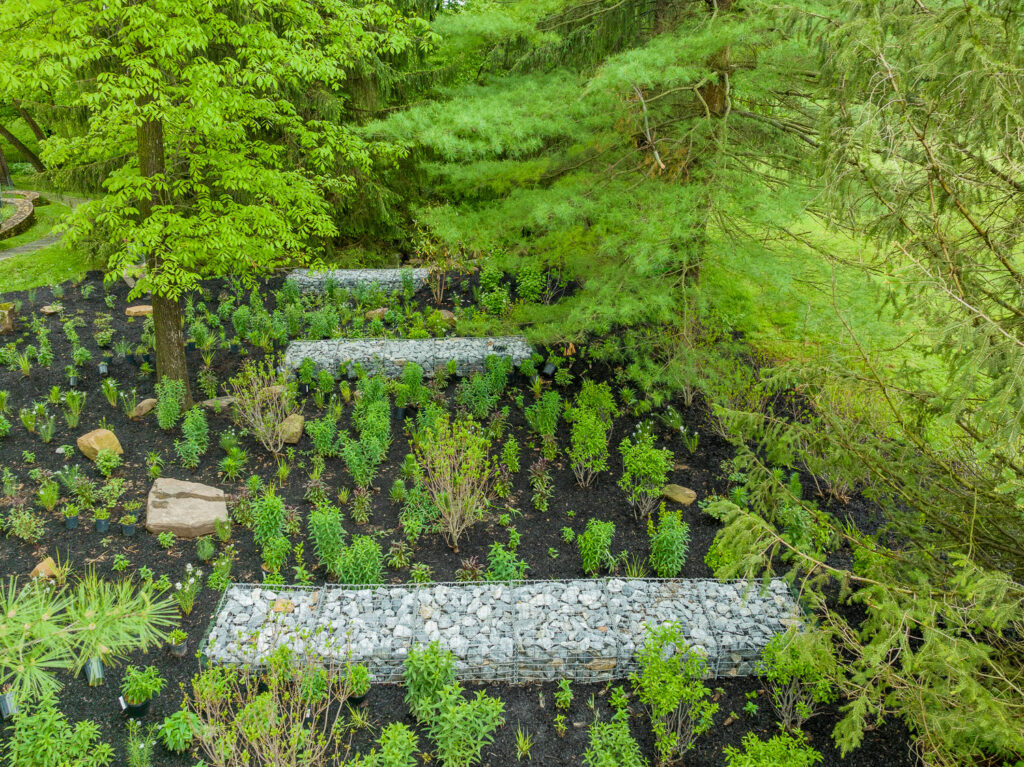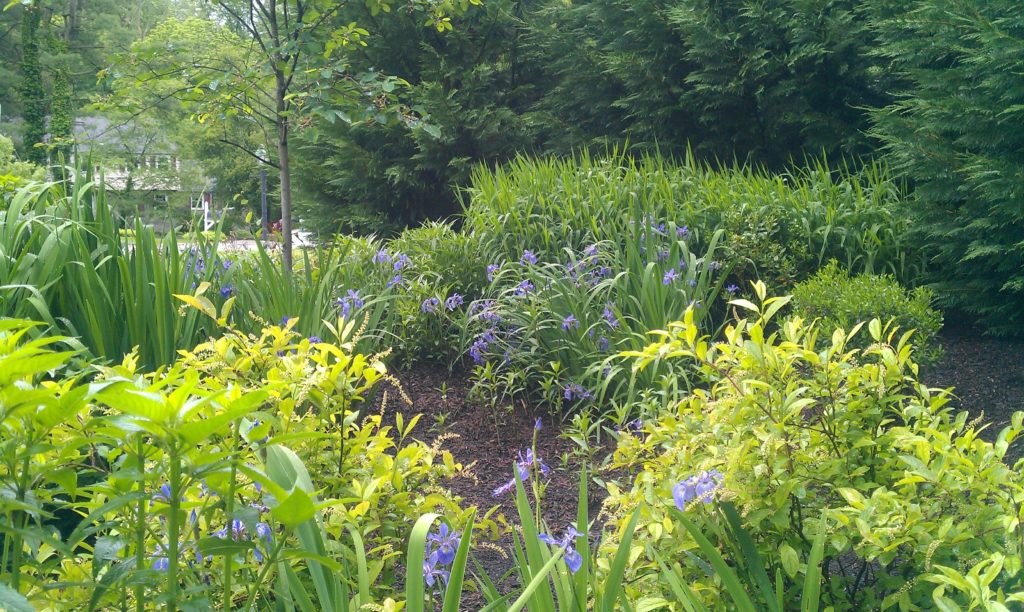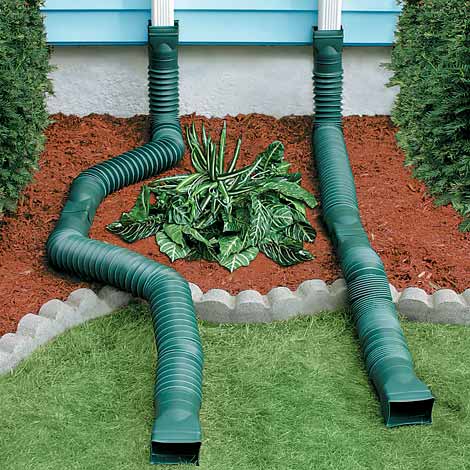With larger and more frequent storms, it is important to understand how to manage drainage and erosion on your property. Learn the do’s and don’ts of managing stormwater by reading these tips!
Drainage
Drainage is the act of removing water from a site. If done too quickly, drainage causes erosion. If done too slowly, yards and basements are soggy and wet. Start with these simple drainage steps first.
Check Gutters and Downspouts!
If you have water in your basement, one of the first things you should do is check your gutters and downspouts. Soggy areas near the foundation result in water seeping into the house. Determine if your gutters are clogged, pitched incorrectly, or undersized. Fix this simple problem, and save money on more expensive solutions!
Grade Soil Away From House
Soil should be higher at the foundation and slope away for the first six feet. A good rule of thumb is a one-inch drop over each foot. Add soil along the foundation, as long as it remains six inches below the siding of the house. Turn this area into planting beds.
Fill these beds with plants to absorb stormwater, beautify the landscape, and provide other ecological benefits when you are done grading. Remember to mulch the area afterward to protect the soil from erosion. If you need help deciding what to plant, work with a landscape designer for the best results.
These two steps often solve simple drainage and erosion issues, but if your problem is more complex, there is much more you can still do.
Strategies for Erosion
Erosion is the wearing away of soil and rock and moving it to another location. It negatively impacts water quality, soil health, and plant growth. Use these strategies to address erosion immediately and minimize these effects.
Determine the Source
Surface water may be entering your property from the road, rooftops, driveways, and even a neighbor’s property. Determine the source of the problem to find the best solution.
Start at the Top
Address surface water at the highest possible point on your property. Fix the problem before the location of the erosion. You will deal with lower volumes of water this way.
Slow it Down
As water moves downhill, it picks up force and speed, causing erosion. If possible, slow it down. This may mean directing it across a hillside, instead of straight downhill. Another way to slow it down is to use check dams. Check dams are small walls built into trenches or swales for this purpose. They are frequently made of rock or soil, but other materials are also used. Water pools in one section of the swale, and then overflows into the next. Plant native wetland plants in these swales to create a bioswale. It is amazing how much water plants can absorb!

Spread it Out
When water is directed to one area, erosion is much more likely to occur. Spread it out to reduce the energy behind the flow. One way to do this is to use level spreaders. Level spreaders are essentially perforated pipes set across a hillside. Water is released along the length of the pipe, instead of in one location.
Let it Sink In
When water is absorbed into the ground, this is called infiltration. Rain gardens are an excellent tool to get water to infiltrate. Make sure your soil can manage the stormwater by doing a quick infiltration test. If the water drains into the ground, install a rain garden.
Let Plants do the Heavy Lifting

Plants absorb large amounts of water. Simply planting hillsides with trees, shrubs, and perennials instead of mowing them can make incredible differences in runoff. Conversely, removing plants can create erosion issues. We have had many clients over the years who call us with erosion which occurred after they removed hillside plants. Use natural fiber erosion control matting on steep slopes while plants get established.
Use Multiple Locations and Strategies
Install several rain gardens, or direct water through a bioswale to a level spreader. Plant hillsides and reduce turfgrass. Using more than one tool allows you to manage water in smaller volumes. It is also a great way to improve the ecological function and the beauty of your property.
Drainage and Erosion Don’ts
Managing water can be unpredictable. Before you get started, make sure you understand the basics, and pay attention to these simple don’ts!
- Don’t direct water to a hard surface or neighbor’s property.
- Don’t allow water to pool for more than 48 hours. (Mosquitoes complete their life cycle in 72 hours).
- Don’t direct water to one location.
- Don’t expect rocks to solve your problem. Water simply runs around rocks. They are a great tool, but seldom are the best stand-alone solution.
- Don’t create an ugly fix. We are designers as well as experts in erosion and drainage. Let us know if we can help you turn your stormwater problem into an asset!

If your drainage and erosion problems are larger than you can manage, we would love to help. From French drains to infiltration pits, contact GreenWeaver to install both small and large-scale projects!
You can also check out our Portfolio of past projects.

